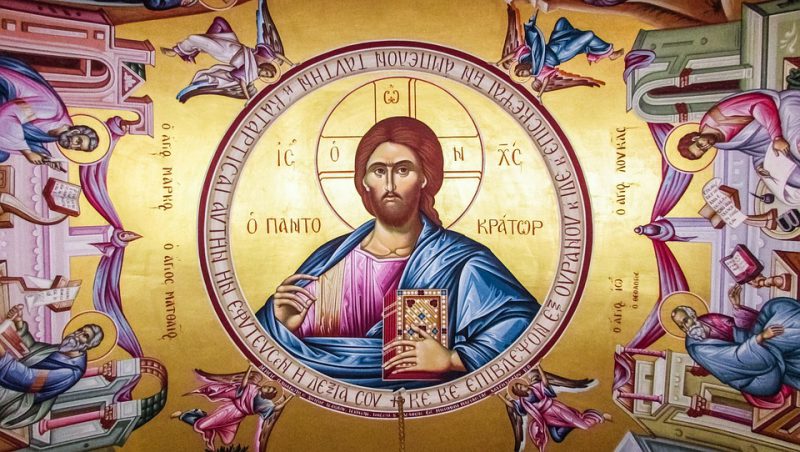Convened in 431 AD, the Third Ecumenical Council (or the Council of Ephesus) addressed theological questions related to the nature of Christ and His Mother, the Theotokos and Ever-Virgin Mary. The canons set forth at this Council condemned the heretical teachings of Nestorius and played a significant role in shaping the doctrine and unity of the early Church.
4 minutes
Historical context leading to the Council
The early fifth century was a period marked by theological controversy. The most contentious controversies surrounded the nature of Christ and the role of the Virgin Mary. Two major theological schools dominated the debate: the Alexandrian and the Antiochian. At the heart of the controversy was Nestorius, Patriarch of Constantinople, who challenged the use of the term “Theotokos” (God-bearer) for the Virgin Mary. He argued that Mary should be called “Christotokos” (Christ-bearer), emphasizing a distinction between the divine and human natures of Christ. In other words, Nestorius believed the Theotokos gave birth only to the man Jesus Christ, not the Son of God.
Related: Why We Call the Virgin Mary “Theotokos”
This position was quite problematic, as it diametrically opposed the doctrine of the Incarnation, the belief that God became man. It is through Christ, the Theanthropos (God-Man), that we can reconcile with God and attain communion with Him. If Christ is not God, and the One who sacrificed Himself on the Cross for us is just a man, then the chasm between God and humanity is not, in fact, repaired at all. And salvation is impossible.
Emperor Theodosius II convened the Council in the Church of Mary in Ephesus, a fitting location given the subject matter. Over 250 bishops attended, including delegates from the Church of Rome, with St. Cyril of Alexandria presiding. Nestorius and his supporters, including John of Antioch, arrived late, which led to tensions and procedural disputes.
The condemnation of Nestorius
The Third Ecumenical Council reaffirmed the traditional understanding: that Jesus Christ is one Person with two natures, divine and huma. Those natures are united without confusion, change, division, or separation. The Council also affirmed the use of the title “Theotokos” for the Virgin Mary, a title that safeguards the truth of the Incarnation: that the Son of God truly became man.
The Church condemned and deposed Nestorius for his teachings, which the council declared heretical. Anathema was placed upon those who did not confess that Jesus Christ is truly God and His Mother is Theotokos.
Canons decreed by the Council
While the Third Ecumenical Council issued only a handful of formal canons, these canons have had a significant impact on the doctrine and unity of the Church. The canons accomplished the following:
- Condemned the teachings of Nestorius (Nestorianism)
- Declared Mary as “Theotokos” (Mother/Birthgiver of God)
- Deposed Nestorius as Patriarch of Constantinople
- Forbade altering the Nicene Creed
- Prohibited the creation of any other Creed
- Restored bishops deposed by Nestorius
- Ordered deposition or excommunication for clergy or laity supporting Nestorius
- Addressed the issue of the autonomy of local churches
After the conclusion of the Council, conflict continued. Eventually, the so-called “Formula of Reunion” in 433 managed to achieve reconciliation, though divisions persisted in some regions.
Significance of the Third Ecumenical Council
The Eastern Orthodox Church views the canons and decrees of the Council of Ephesus as authoritative and inspired by the Holy Spirit. We celebrate this Council every year on the Sunday after Pentecost and on September 9th, as a triumph of true doctrine and a defense of the mystery of the Incarnation. The affirmation of Mary as Theotokos is not merely a Marian doctrine but a Christological one, safeguarding the unity of Christ’s person.
This Council also exemplifies the Orthodox understanding of conciliarity, wherein bishops, guided by the Holy Spirit, gather to discern and affirm the faith once delivered to the Saints. The Council of Ephesus, together with the other Ecumenical Councils, remains a vital point of reference for Orthodox theology and ecclesiastical life.
The Third Ecumenical Council stands as a pivotal moment in Church history. For the Eastern Orthodox, it is a witness to the Church’s fidelity to apostolic teaching and a model of the conciliar process. Its Christological decisions continue to shape Orthodox faith and worship, affirming the mystery of the Incarnation and the role of the Theotokos in God’s plan of salvation.
Keep Reading: Do Orthodox Christians Worship Mary?

